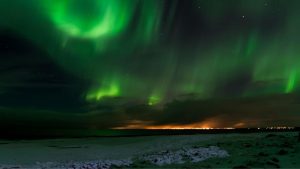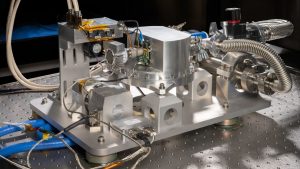That Famous Black Hole Just Got Bigger and Darker

Four years ago, astronomers released the first ever image of a black hole: a reddish, puffy doughnut of light surrounding an empty, dark hole in the center of the giant galaxy M87, which lies 55 million light-years away in the constellation Virgo.
The image made visible what astronomers, and the rest of us, had only been able to imagine: a celestial entity so massive that its gravity warped space-time, drawing matter, energy and even light into its bottomless vortex. The image was released on April 10, 2019, by an astronomy squad called the Event Horizon Telescope, so named for the boundary of no return around a black hole.
Now a subset of that team, led by Lia Medeiros of the Institute for Advanced Study in Princeton, N.J., has used artificial intelligence to reprocess the original data and produce a vastly improved version of the image.
The new image, they say, will sharpen constraints on how well the black hole in M87 fits with Einstein’s general theory of relativity, which first predicted the existence of black holes. Dr. Medeiros and her colleagues published the new image on Thursday in Astrophysical Journal Letters.
Perhaps the image will join its 2019 ancestor in the photography collection of the Museum of Modern Art in New York. Both images are based on observations that were made in April of 2017. The Event Horizon team effectively created a telescope as big as Earth by combining data from five radio telescopes as far apart as the South Pole, France, Chile and Hawaii, using a technique called very long baseline interferometry.
The resulting instrument was powerful enough to resolve details as small as an orange on the surface of the moon or a cosmic pinprick of nothingness — with the mass of 6.5 billion suns — 55 million light-years away. But gaps in the network led to uncertainties. “We used machine learning to fill in the gaps,” Dr. Medeiros said in an interview.
Her team trained the neural network to recognize the black hole by feeding the A.I. simulations of all kinds of black holes consistent with Einstein’s equations.
In the improved version, Dr. Medeiros said, the doughnut of doom — the visible radiation from matter falling into the hole — is thinner than in the original. And the empty spot in the doughnut’s center appears blacker and bigger, bolstering the idea that there really is a black hole there.
The team is already analyzing the new image to gain a better estimate of the mass of M87’s black hole, but they are not yet ready to discuss it.
In the meantime the work continues, with an even bigger Event Horizon network. (Three new telescopes have been added.) Every April, when M87 and the center of our galaxy (home to a smaller black hole) are in view, the Earth-size eye renews its gaze into the darkness.
“People are at the telescopes,” Dr. Medeiros said.







